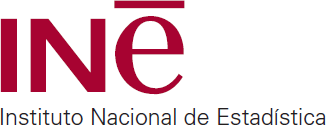- INEbase
- Services
- Global surveys on Services Sector
Structural Business Statistics: Services Sector. Latest data

Latest press releases
Turnover in the Services Sector increased by 22.2% in 2022 and stood at 710,217 million euros. The number of people employed in the Services Sector reached 8.3 million, an increase of 6.6% compared with 2021. The Autonomous Communities with the greatest share in turnover for the Services sector in the year 2022 were Comunidad de Madrid (33.3%) and Cataluña (19.5%).
| Indicator | Note | Value | Annual change |
|---|---|---|---|
| Turnover | 1 | 710,216,704 | 22.2 |
| Total purchases of goods and services | 1 | 411,018,306 | 24.3 |
| Gross added value at factor cost | 1 | 325,291,852 | 17.2 |
| Personnel expenses | 1 | 206,619,932 | 12.9 |
| Wages and salaries | 1 | 162,562,428 | 13.8 |
| Gross operating surplus | 1 | 118,671,920 | 25.5 |
| Investment in tangible assets | 1 | 45,464,181 | 15.4 |
|
|||
Most popular tables
- Main figures according to main activity (CNAE-2009 to 1, 2, 3 and 4 digits)
-


- Last modified:
- 23/06/2017
- Variables:
- Period:
-


- Last modified:
- 15/03/2024
- Variables:
- Period:
-
- Main figures according to main activity (CNAE-2009 to 1, 2, 3 and 4 digits)
-


- Last modified:
- 15/03/2024
- Variables:
- Period:
-


- Last modified:
- 15/03/2024
- Variables:
- Period:
-


- Last modified:
- 15/03/2024
- Variables:
- Period:
-


- Last modified:
- 15/03/2024
- Variables:
- Period:
Did you know...?
The objective of the Annual Services Survey is to ascertain the structural and economic characteristics of companies whose main activity is classified as non-financial services, that is, Transport and Storage, Accommodation, Information and communications, Real Estate Activities, Professional, scientific and technical activities, Administrative and support services activities, Education, Health Activities and social services, Arts, Recreation and Entertainment Activities, and Other services (Repair of computers, personal effects and household items, and other personal services).
This statistic, governed by Regulation 2019/2152 of the European Parliament and of the Council and its implementing act 2020/1197, provides information on the structural characteristics of services sector companies, such as size and economic data (income and expenditure), as well as the employment and investment structure.
In order to improve the structural surveys processes on companies, the “Integration Project of the Structural Business Statistics” has been implemented. This project intends to use one integrated questionnaire, a harmonized sample design, a joint and simultaneous data collection, the homogenization of the development processes and the simultaneous dissemination for the three sectors of study (Industry, Trade and Services). This project is implemented as of the reference year 2015 on.

